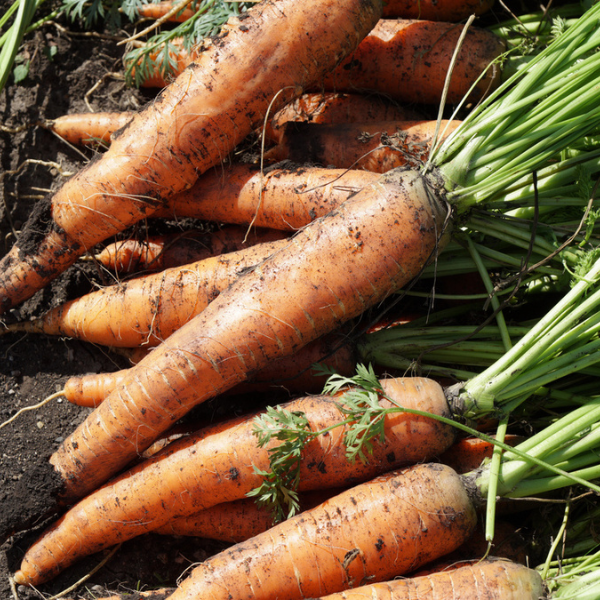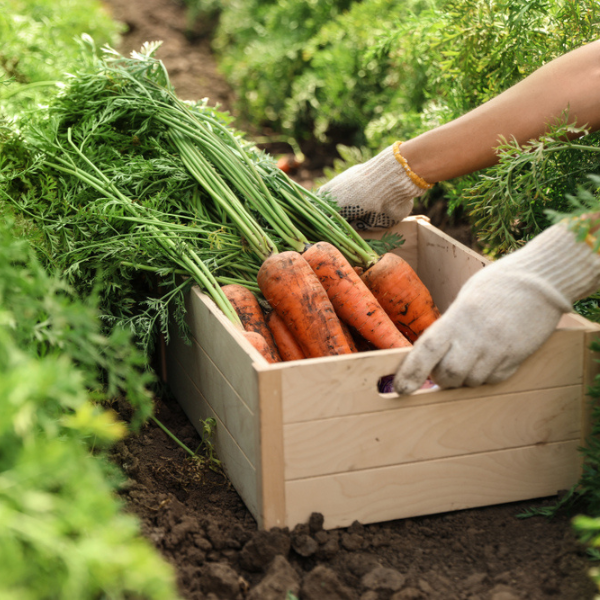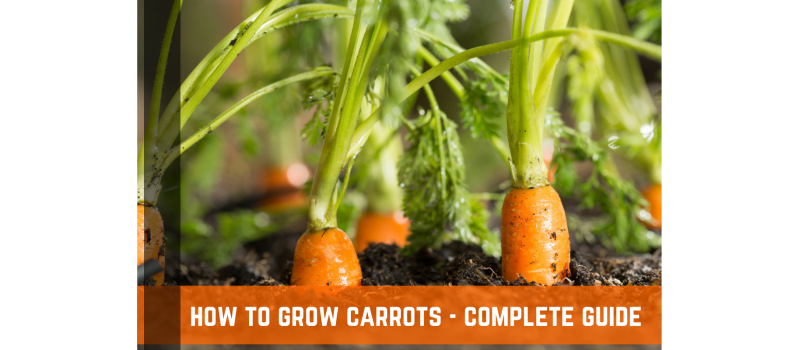Carrot is a common root vegetable (typically orange) used worldwide. Because of its high nutritional value, presence of B-carotene, fiber, antioxidants, minerals, flexibility for processing in many ways, and ability to remain edible even after months of reliable storage in ordinary or refrigerated places, carrot was instantly embraced wherever it appeared after being brought from Iran and Afghanistan.
Botanists improved the composition, look, flavor, and size of old carrots to create the contemporary orange-colored carrot, which appeared in 17th-century Netherlands. These are only some of the reasons a home gardener would want to add carrots to their gardens.
Optimal Growing Conditions For Carrots
The Apiaceae family, which already includes celery, parsley, and dill, includes carrots as members. In their second year as biennials, carrots grow attractive umbels (clusters of tiny flowers) that draw helpful bugs like ladybugs and predatory flies that eat problem insects like aphids and tomato hornworms.
Therefore, you might wish to forego harvesting a few carrots so that they can grow flowers that will help your vegetable garden the next year. In order to harvest your carrots before the ground freezes, plant them in the early spring or late summer/early fall.
Carrots grow best in full sun and cool temperatures. A excellent carrot yield depends on good soil, just like in all vegetable plots. Wherever you intend to plant carrots, be sure to clear the area of all pebbles and roots; otherwise, you risk having some oddly shaped vegetables.
Carrots appreciate lots of potassium and phosphate to grow strong roots, and they love loamy soil with a neutral pH and a moderate amount of nitrogen. Also flourishing in raised beds and containers, carrots. To determine how deep your containers or raised beds need to be for proper root development, measure the estimated root size of your carrots.

How To Grow Carrots
When the weather is chilly, carrots thrive best. You can start growing carrot seedlings or planting carrot seeds as soon as the soil can be handled in the springtime, even a couple of weeks before the last frost. You can plant carrot seedlings in the ground or plant carrot seeds in containers.
Carrots are one of those vegetables that can have successive plantings done to them throughout the spring. It is possible that you will have more success growing carrots in the autumn and throughout the winter if you live in an area that is warmer. Carrots do best in an area that receives between six and eight hours of direct sunlight per day, or in an area that receives some shade in the late afternoon.
Because carrots will develop extremely slowly, with harsh roots, if they are pushed to grow in thick soil, the soil in which they are grown should be sandy, loose, and well-drained. Carrots thrive best when they are cultivated in raised beds that are filled with loose soil.
Carrots must be properly spaced apart from one another in order to produce a good harvest; yet, this can be challenging at times and needs a lot of thinning. Plant the seeds about a quarter of an inch below the soil's surface and as evenly as you can space them between two and three inches apart.
It is not a problem for seedlings to have some of them sprout half an inch apart from one another; nevertheless, as they grow, they normally need around three inches of spacing between each other. Cutting the seedlings off at the soil line using snips or pinches is the most effective approach to protect the adjacent roots from being injured. Carrots do not require any type of support; yet, they do not enjoy being transplanted or otherwise disturbed.

Care & Maintenance
In spite of the fact that the roots are developing below ground, the foliage must be exposed to full sun to a combination of full sun and some shade for the carrots to expand rapidly and produce sugars. Carrots require a soil that is sandy and has good drainage.
The carrot roots will split and become misshapen if rocks and clumps are present in the soil. Carrots thrive in soil that is somewhat acidic, with a pH ranging anywhere from 6.0 to 6.8. Every week, give your carrots at least an inch's worth of water to help them thrive. Mulching will assist in water conservation and will maintain a cooler soil temperature.
These biennials are often cultivated as annuals throughout all zones and climates since they are easier to care for. On the other hand, they have the best growth potential and taste the finest when the average temperature during the night is around 55 ° Fahrenheit and the average temperature during the day is approximately 75 degrees Fahrenheit.
Carrots are a vegetable that can be grown as a late autumn and winter crop in regions that have warmer weather. About 2 weeks after the carrot tops emerge, you will need to provide extra feeding if the soil in your garden does not have a high concentration of organic matter. Any organic vegetable fertilizer of a sufficiently high quality will do. Since they are grown for their roots, you shouldn't provide an excessive amount of nitrogen fertilizer, which is largely beneficial to the growth of the foliage.
Harvesting Carrots
It may seem difficult to determine when and how to pick carrots, but when the vegetables mature, the shoulders will begin to emerge from the earth, indicating that they are ready to be picked. When grown from seed, the majority of carrot cultivars require between 60 and 80 days to reach maturity; however, baby carrots should be ready for harvest within 30 to 40 days after planting.
Carrots planted in the spring should not be left in heated soil; it is preferable to pick them tiny bit early as opposed to waiting too long. Carrots that are grown in the fall and mature in cooler soil can be left for longer before being harvested; nevertheless, they must be dug out before the soil freezes in order to maintain their quality.
First, use a trowel to break up the earth around the carrot root, and then carefully lift the carrot itself out of the ground to harvest it. After cutting off the verdant tops to prevent the loss of moisture, rinsing the roots, and drying them with paper towels, the roots can be kept for up to two months in a sealed plastic bag in the fridge or a cool root cellar. Pickling, dehydrating, canning, and freezing carrots are also viable preservation methods.

Common Pests & Diseases
The carrot rust fly is the most destructive insect pest that can affect carrots. It burrows into the dirt towards the top of the carrot to lay its eggs. After hatching, the larvae make their way down into the soil and eventually into the roots of the carrot, where they feed and form tunnels all the way through the vegetable.
Carrot weevils can wreak comparable damage. Rotating the locations of your plants from year to year is one strategy for warding off pests, but the simplest method is to plant your carrots underneath landscape fabric.

